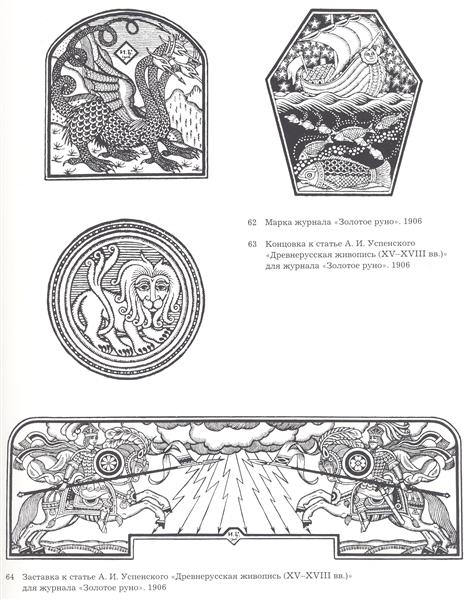Description
The work "Illustration for Toisón de Oro - 1906" by Ivan Bilibin is a forceful testimony of talent and the meticulous technique of the Russian artist. This work demonstrates sublime conjugations between the visual narrative and the decorative art that characterized much of the production of bilibin, a prominent member of the Mir Iskusstva movement or "art world."
Observing the work, it is evident that Bilibin had a master's degree in the use of color and composition. The painting is structured with a balanced and symmetrical composition, turning our attention to a central figure dominated by elegant lines and rich details. The choice of color is particularly significant; The vibrant saturation used both in the landscape and in the decorative elements confers an almost ethereal quality, as if it were taken from the pages of a legend.
In the painting, terrible and golden tones predominate, which are not only consistent with the name of the magazine, but evoke a sense of luxury and seniority. This color use is not accidental; Bilibin created a visual spectrum that intensifies the feeling of being before a scene of a medieval epic, enriching the visual narrative with its chromatic vividness.
The human presence in the work is manifested through a male figure, possibly a gentleman or a prince, dressed in an elaborate clothing that suggests nobility and a deep connection with the Slavic culture. Details such as geometric patterns in their clothes and the decoration of the banner he holds, reveal not only the bilibin ability to draw fine details, but also their knowledge and love for Russian folklore. This approach to the human figure in a detailed landscape is a tactic that Ivan Bilibin used to attract its spectators, directing the narrative through a visual fascination that almost dialogues with the viewer.
The surrounding environment is full of symbols and iconography, typical of the iconographic repertoire of Russian folklore that Bilibin so much appreciated. His illustrations, often loaded with decorative and architectural motifs inspired by ancient churches and Russian strengths, give the painting a very specific air that articulates that connection between architecture and fantasy, conferring the atmosphere of a fable.
Ivan Bilibin, who was also a prominent illustrator of popular stories and literary works, never shunned the application of his meticulous technique to highlight the narrative importance of each piece. In "Illustration for Toisón de Oro - 1906", the insistence on framing the scene with almost calligraphic ornamental decorations, reminds us of its ability to integrate pure illustration with decorative art. This not only reinforces the visual narrative, but also defines a particular aesthetic that has become synonym for bilibin.
In conclusion, "Illustration for Toisón de Oro - 1906" encapsulates not only the flowering of Ivan Bilibin's talent, but also its unique ability to merge the art of design with visual narrative. Painting is a brilliant example of how art can serve as a window to imaginary worlds, through the conjunction of meticulous techniques and a deep understanding of folklore and visual tradition. This work is undoubtedly a jewel within the repertoire of Bilibin and Russian illustrative art of the early twentieth century.
KUADROS ©, a famous paint on your wall.
Hand-made oil painting reproductions, with the quality of professional artists and the distinctive seal of KUADROS ©.
Art reproduction service with satisfaction guarantee. If you are not completely satisfied with the replica of your painting, we refund your money 100%.

